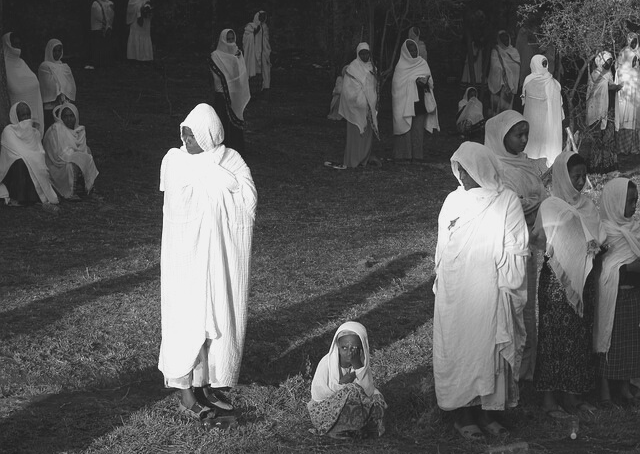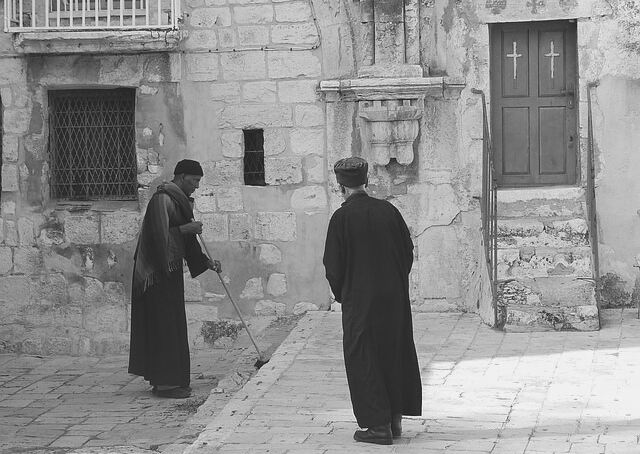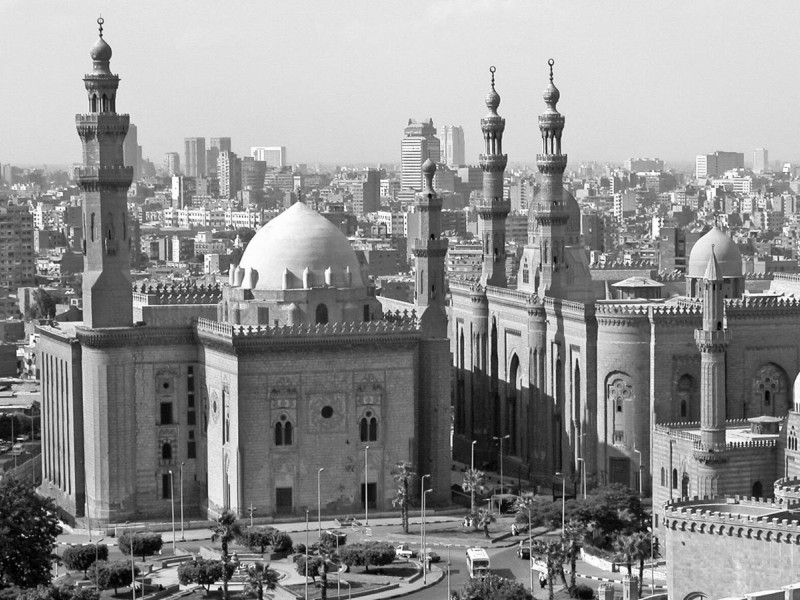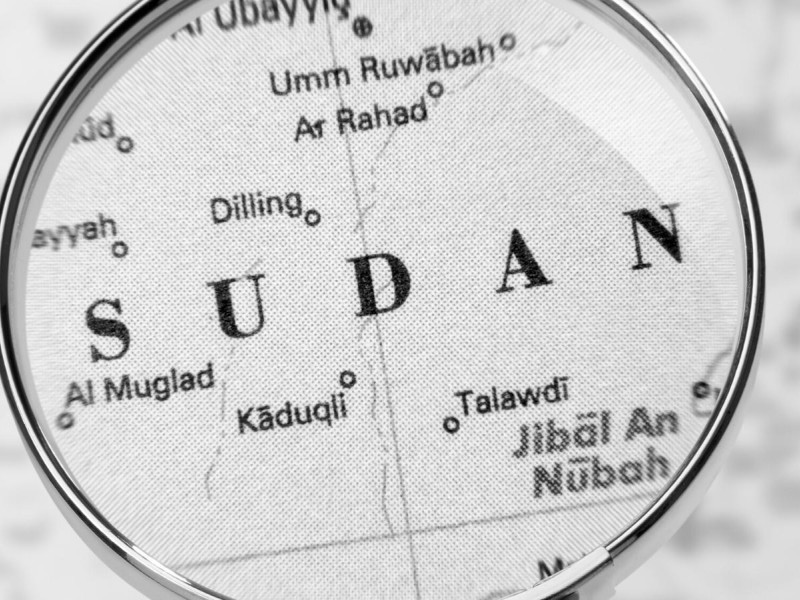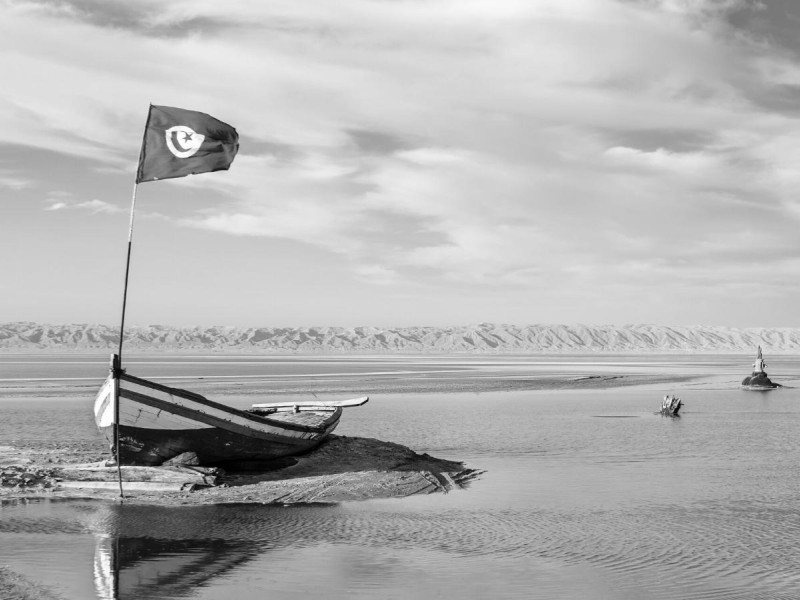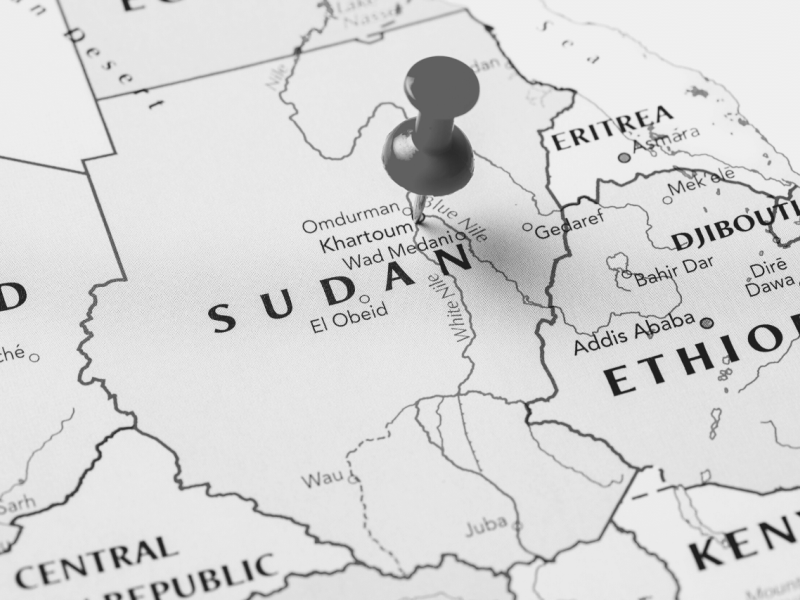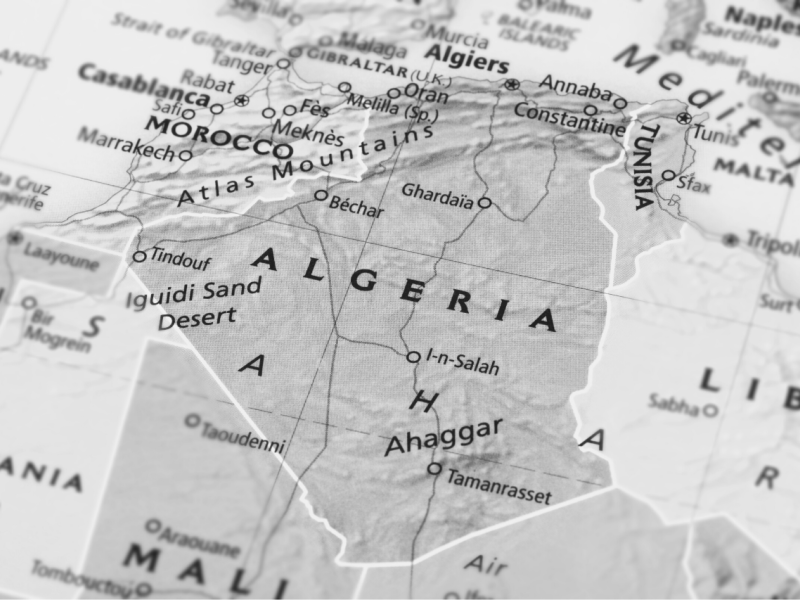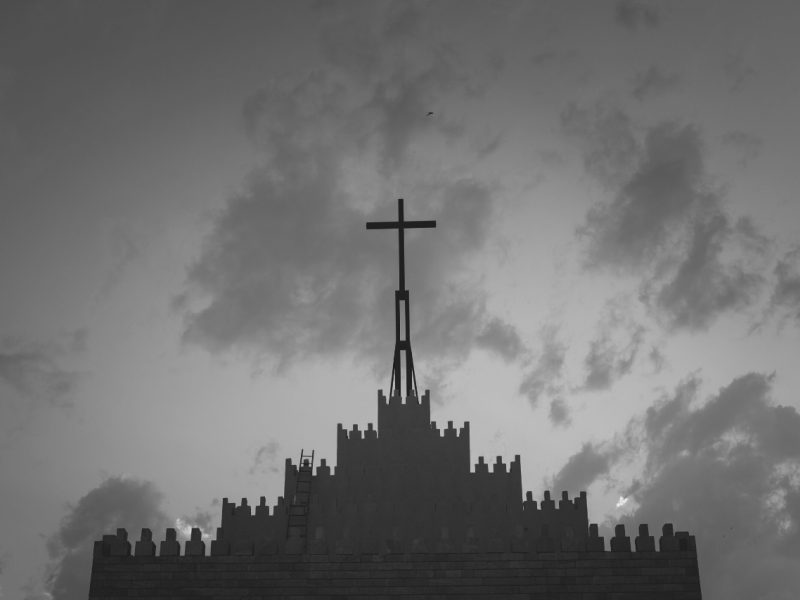Christianity in Africa – Retroactive Appraisals
The Christian communities of the African continent were some of the earliest Christian communities in the world. While Roman and European influences heavily influenced early Christianity in Africa, African Christians have increasingly Africanized the religion throughout its history. They mixed it with the continent’s traditional values and traditions.
Though Christianity is often thought of as a chiefly European religion, Africa has the largest Christian population in the world today. In this article, we will explore the African development of Christianity.
History of Christianity in Africa
Christianity spread from its birthplace in Palestine and arrived on the African continent in Egypt during the mid-first century. The communities of Christians in North Africa, namely Egypt, were some of the world’s first Christian communities.
Religion was first brought to the city of Alexandria, a city that would play a crucial role in spreading it throughout North Africa. Alexandria was the first urban center of the religion on the continent, followed by Carthage as the religion spread throughout North Africa.
Who Brought Christianity to Africa?
Mark the Evangelist became the Orthodox Church of Alexandria’s first bishop during the first century. Christianity then began to spread to the West and East, reaching the region surrounding Carthage by the end of the 2nd century.
The Aksumite empire, located in modern-day Ethiopia and Eritrea, was one of the world’s first regions to make Christianity their official religion in the 4th century. The early Christian church in Sub-Saharan Africa was thought to be located in the highlands of Northern Ethiopia.
In North Africa, Christianity was seen as the dissenting religion against the increasingly expanding Roman Empire until 312 A.D. when Constantine made Christianity the official religion of the Roman Empire. By the end of the 4th century, Christianity was alive and well throughout the region as a thriving intellectual and spiritual part of North African culture.
While the Church in Egypt remained indigenized during its transition to Christianity, the North African Church was inherently Roman, with Latin being its prominent language. The Nubian kingdoms Nobatia, Makuria, and Alodia, would adopt it as their official religion in the 6th century.
During the 7th century, the influence of Christianity in North Africa was thwarted by expanding Islamic forces. However, small pockets of Christians would remain.
The region of modern-day Ethiopia would remain Christian despite these Muslim influences. By the end of the Muslim conquests, the Aksumite Ethiopian Empire was one of the only Christian states left in the region. It held the unique Christian customs that separated it from other African Christian churches.
The spread of Islam throughout North Africa severely diminished the number of Christians in Africa, with the Eastern Orthodox Church of Alexandria, the Coptic Orthodox Church of Alexandria in Egypt, and the Orthodox Tewahedo Church in the Horn of Africa being the only original African churches remaining in the region.
The head of the Catholic Church of Africa was the bishop of Morocco in 1246. The bishopric of Marrakesh was the leader of the African Catholic Church until the late 16th century. Christianity spread from Portuguese expeditions to Sub-Saharan Africa during the 15th century.
Throughout the 15th and 16th centuries, European trading outposts were established on the continent, with many traders bringing Christian missionaries. The African coastline slowly became more Christianized, while the interior remained mostly untouched by the religion. However, Portuguese explorers would explore parts of the modern-day Congo interior during this period. In the continent’s interior, most Africans continued practicing their beliefs until the 18th century, as European powers began to colonize Africa.
In 1652, the Dutch Reform Church was founded in Southern Africa. This church would remain deeply rooted in South Africa. Still, the international community condemned the church in the 1980s for its support of South African apartheid.
Throughout the 18th and 19th centuries, there was an influx of Christian missionaries sent throughout the continent. Missionaries often tried to persuade African leaders to convert to Christianity and thereby their people as well.
Africans could often fight back against their communities’ Christianization – Europeans were often brutal in their tactics. They were solely interested in enriching themselves or their home country.
Throughout the late 18th century, many former slaves who fought on Britain’s side in the American Revolutionary War began to travel to the continent to preach the gospel. They believed that they had common ground with the Africans.
These black preachers played a massive role in spreading Christianity during this period. They put the religion in an African context. Many of these preachers helped translate the Bible into indigenous African languages. However, many of these languages had never been written down before. Anti-slavery sentiments were a large component of missionary work in the 19th century.
Throughout the early 19th century, missionaries often played a crucial role in mapping the continent and reporting on the African communities’ political and geographic landscape. It would set the groundwork for the colonization that would come later on in the century.
The Catholic Church would increasingly send missionaries throughout the continent during the 19th century. The Catholic Church employed many native African missionaries to spread the gospel throughout Africa. In contrast, white Catholic missionaries were urged to adopt many native cultural practices, such as dress and language. Many of these missionary expeditions were granted freedom and independence from the Catholic Church’s power in Rome.
During the 20th century, missionary efforts shifted from purely theological to pragmatic. Missionaries brought hospitals, schools, and other resources to remote, impoverished African communities. After the decolonization of the mid-20th century, an Africanization of Christianity began to occur throughout the continent, as Africans increasingly brought native African traditions into the religion.
Christianity in African Education
Both Christians and Muslims built schools across the continent that taught religious beliefs.
In the Islamic faith, the Quran could only be recited in Arabic, so teaching Islam in the local African language was not a goal of Muslim missionaries.
Christian missionaries, however, saw the vast importance of translating their teachings and the Bible to the native African language. Many Christian schools taught English and curriculums of Western education. Many Africans saw this as a threat to strong African cultural customs and history.
The Africanization of Christianity
Christian Africans have always tried to blend their African native traditions with Christian traditions. African adaptions of Protestantism, like the Kimbanguist Church, emerged in African religious society, which began to question the white European Christianity brought onto the continent. Many churches made massive departures from traditional European Christianity, depicting Jesus as African and allowing women to become priests and preachers.
There were ideas of African society not expressly condemned by the Bible. For example, European Christianity prohibits polygamy. However, some African Christian societies allow its practice. Africans also brought many of their cultural components into their religious worship, such as native African chants and dancing.
Western European missionaries found it extremely difficult to bring religion to African society. The challenge was how to strike a balance that was acceptable to Africans while upholding European Christian values. As the Bible got increasingly translated to native African languages, more and more Africans began to interpret the Bible to their discretion, challenging European missionaries’ teachings.
The Christianization of Africa also brought conflict within African communities themselves, as different factions and interpretations of the religion formed throughout the continent. Young African Christians challenged elders throughout communities, and African nationalist movements have used religion to further their political influence.
Original African Churches of Egypt
The 451 Council of Chalcedon’s political and theological caused a schism of the Church of Alexandria, which split into the Coptic Orthodox Church of Alexandria and the Greek Orthodox Church of Alexandria.
While the Coptic Orthodox Church became the church for most of the Coptic population, a small minority adhered to the Greek Orthodox Church of Alexandria that used Greek as its liturgical language. The Greek Orthodox church was loyal to the emperor of the Eastern Roman Empire. It remained in communion with the Ecumenical Patriarchate of Constantinople.
Members of the Coptic Church, which was adhered to by the vast majority of the Egyptian population, experienced severe oppression at the Eastern Roman Empire’s hands, which view the Coptic Church as heretical. During the Muslim conquests of the 7th century, adherents to both churches were treated relatively well. However, they had to adhere to Sharia law. The Egyptian population stayed mostly Christian until the 12th century when a shift to Islam occurred.
The Greek Orthodox Church had remained a small minority of Christians in Africa since the Muslim conquests of the region during the 7th century when it became cut off from the Byzantine empire.
The Greek Orthodox Church began to grow once again during the 19th century, as migrants from Greece, Syria, and Lebanon began to settle throughout the continent and establish Orthodox Churches. During the 1840s, Orthodoxy started to grow in Alexandria’s city when a wave of Greek migrants started to settle.
These Orthodox settlements caused some confusion, as the church was unsure about which bishops were responsible for foreign priests. This confusion was resolved during the 1920s when the Patriarchate declared that all African Orthodox Churches would be under the Patriarchate of Alexandria’s jurisdiction.
During the 19th and 20th centuries, oppression against Christians began to become more relaxed throughout Egypt. Christians started to serve in the Egyptian military with Muslims, and a mostly healthy coexistence developed between the two religions. However, many Egyptian Christians would later suffer persecution during the 2000s.
During the 1930s, the Greek Orthodox Church began to spread across the continent as missionaries visited Uganda and Kenya. In 1946, the Greek Orthodox Patriarchate of Alexandria received Kenyan and Ugandan African Orthodox groups.
The Kenyan Orthodox Church suffered tremendous oppression from British colonial authorities during the Mau Mau Uprising of the 1950s. The rebellion among Kenyan nationalists against brutal British colonial rule. A majority of the Kenyan Orthodox Church’s clergy were imprisoned in concentration camps. Orthodox churches and schools were closed down.
The Cathedral in Nairobi was the only Orthodox Church to remain open due to its membership mostly being Greek. Archbishop Makarios III of Cyprus and Jomo Kenyatta, leaders of the Kenyan anti-colonial movement in Kenya, formed a relationship that heavily critiqued British colonial rule’s brutal realities in Africa. When Kenya achieved its independence in 1963, the Greek-speaking Church of Cyprus helped rejuvenate the Greek Orthodox Church in Kenya by helping build a seminary and sending missionary teachers.
During his seven years as patriarch of the Greek Orthodox Church of Alexandria from 1997 to 2004, Pope Petros VII helped spread the Greek Orthodoxy across Arab North Africa and throughout the continent. More importantly, he established friendly relationships with both Muslim religious leaders and leaders of the Coptic Orthodox Church. The Russian Orthodox Church and the Greek Orthodox Church of Alexandria officially cut ties in 2019 when the latter recognized the Orthodox Church of Ukraine.
Since the Roman Empire’s days, the Greek Orthodox Church of Alexandria is 300,000 strong today, the highest number of Eastern Orthodox Christians in the church.
Today, an estimated 60 million Coptic Orthodox Christians in Egypt, Ethiopia, and Eritrea. There are also significant numbers in North America, Europe, Australia, Sudan, and Israel.
African Christianity Today
As of 2020, 49 percent of Africans are Christian, while 42 percent are Muslim. Christianity today is practiced by most of the population in Southern African, Southeast African, and Central African states, with many other Christian people in parts of the Horn of Africa and West Africa. Africa has gone quickly from a continent that followed indigenous religions to the Christian and Muslim dichotomy. Togo was the only state with a majority practicing an indigenous religion.
A 2018 study showed that Africa had the most Christians globally than any other continent with 631 million, compared to Latin America’s 601 million and Europe’s 571 million. It is estimated that six countries with the top ten largest Christian populations will be located on the African continent by 2060—this is up from three countries in 2015.
The largest Christian population in the continent is Nigeria, with the Christian population predicted to double by 2060. It is also expected that Uganda, Kenya, and Tanzania will replace Russia, Germany, and China in the list of the worlds’ ten largest Christian populations.
This tremendous predicted growth throughout the 21st century is especially significant compared to Christianity elsewhere around the world, namely Europe, where Christianity is declining rapidly.
The continent contains around 30 percent of the world’s evangelicals, 20 percent of the world’s Pentecostals and charismatics, and approximately 15 percent of Roman Catholics.
Since Africa’s colonization during the late 19th century and its decolonization in the mid-20th century, many communities have incorporated native African customs into the Christian religion.
Conclusion
We have covered many parts of Christianity and Africa. Let’s go over the central components.
The Christian communities of the African continent were some of the earliest Christian communities in the world.
Originating in Palestine, the religion quickly spread to North Africa, the African origin of Christianity.
The religion especially flourished in Alexandria, which would become the religion’s theological urban capital of the African continent.
The religion would spread east and west throughout North Africa until the Muslim conquests of the 7th century replaced Christian North Africa with Muslim influences.
During the 15th century, European missionaries began to spread the religion throughout Sub-Saharan Africa, especially on the coastlines, where trading posts were often located.
The growth of Christianity in Africa grew steadily after the 18th century as European influences increasingly spread throughout Sub-Saharan Africa, culminating in colonization.
The 20th century’s missionary activity was centered mainly around improving health and education conditions for African communities.
The three original African churches, the Coptic Church of Alexandria, the Greek Orthodox Church of Alexandria, and the Orthodox Tewahedo Church, are alive and well today.
The Christian population in Africa is now the largest Christian population globally, with 631 million Christians.
Since the religion’s inception in the first century, Africa has been at the center of the Christian faith.
The spread of Christianity in Africa transformed African communities, both for better and for worse. While many Christian missionaries from Europe brought more economic and educational opportunities to the continent, many aspects of traditional African culture were repressed and replaced by Christianity.
Today, religion plays an enormous role throughout Africa’s religious order. Africans have found ways to Africanize the religion and intertwine it with their traditional values and practices.


